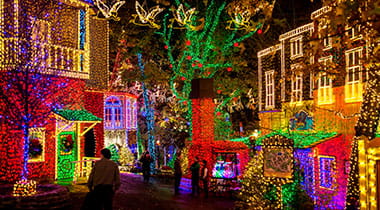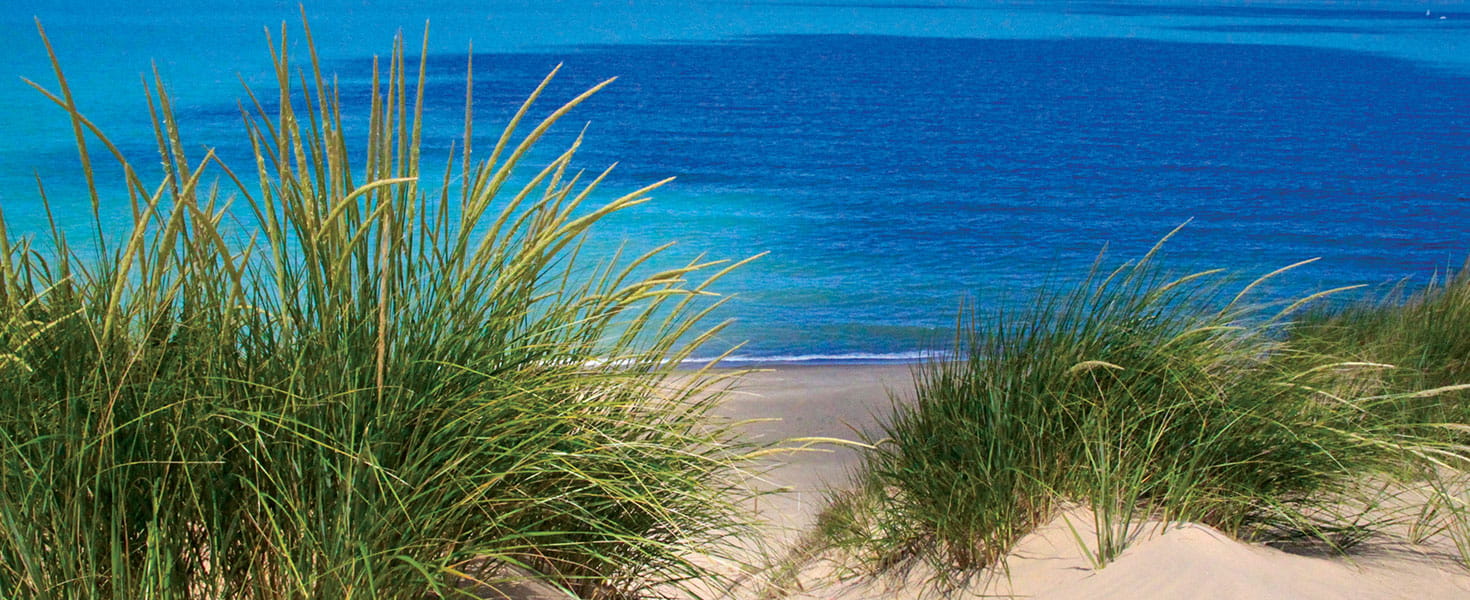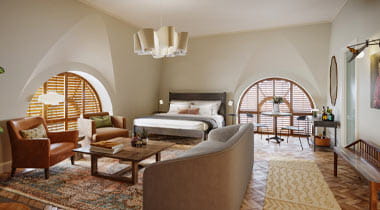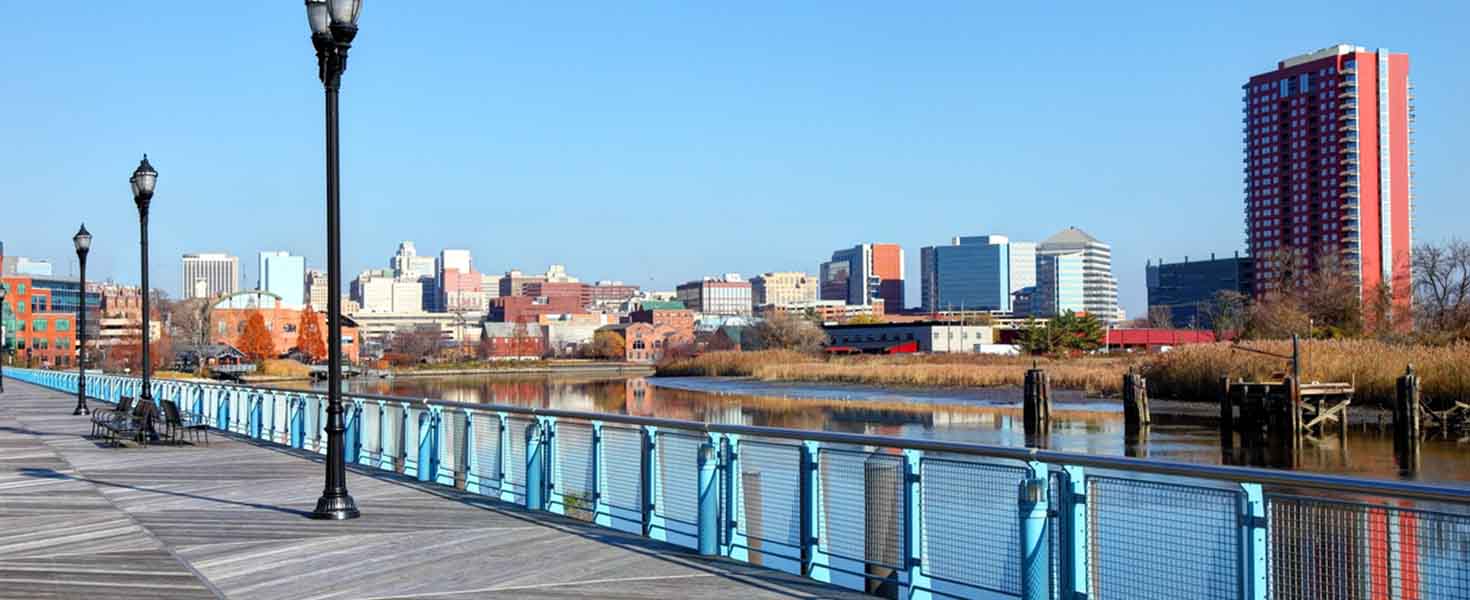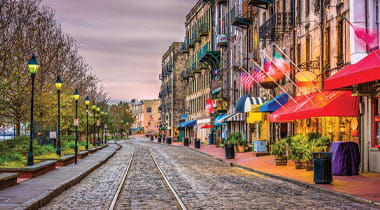Call me biased, but I think my hometown of Wilmington, Delaware, always merits a visit. It has mansions and gardens, a wide array of museums, a revitalized riverfront with a fun-filled beer garden, and state and county parks (Brandywine Creek State Park is my favorite for hiking, picnicking and tubing).
And let’s not forget its varied restaurants, including James Beard honorees Bardea, La Fia and House of William & Merry, as well as the speakeasies (I love the outdoor seating at Torbert Street Social), breweries and wineries.
This summer and fall, a convergence of major exhibitions and museum revamps makes a particularly compelling case for a trip to northern Delaware and the Brandywine Valley. So, gas up the car, and set your GPS for Wilmington.
WINTERTHUR AND JACQUELINE KENNEDY
Whether or not you’re old enough to remember the fanfare when First Lady Jacqueline Kennedy unveiled her White House redecoration project, you’ll likely be fascinated by the latest exhibition at Winterthur Museum in Winterthur, Delaware: Jacqueline Kennedy and Henry Francis du Pont: From Winterthur to the White House (on display through January 8, 2023).
I, for one, had no idea of the role that Winterthur, one of the region’s storied mansion museums, had played in that redesign. When the Kennedys moved to the White House in 1961, they encountered a home decorated in mass-produced furnishings with barely a historical piece in sight. The generic décor neither reflected the history of the country nor befitted the White House’s importance as a place to receive foreign dignitaries. Jacqueline Kennedy aimed to change that.
While her public statements never disparaged her predecessors, Kennedy was quite candid in private correspondence. She described the hallway leading to the ground-floor reception rooms as looking like a combination of a dentist office and bomb shelter, notes guest curator Elaine Rice Bachmann, coauthor (with James Archer Abbott) of Designing Camelot: The Kennedy White House Restoration and Its Legacy.
As Kennedy set about elevating the White House décor, she turned to Winterthur Museum founder H.F. du Pont, then perhaps the foremost scholar and collector of American antiques.
“The partnership between Kennedy and du Pont was at the heart of the story,” Bachmann says, adding that the wealthy octogenarian demonstrated to the First Lady that American antiques could be just as elegant as the French ones she was drawn to.

Winterthur Museum’s new exhibition explores the design partnership between First Lady Jacqueline Kennedy and H. F. du Pont for the White House redecoration in the early 1960s; Photo courtesy of Winterthur Museum, Garden & Library
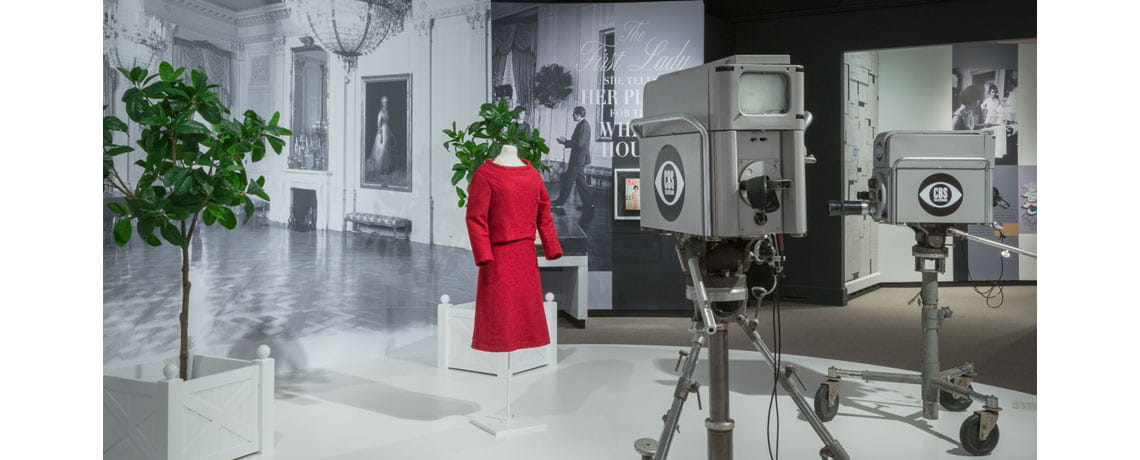
The introductory gallery to Winterthur’s exhibition Jacqueline Kennedy and Henry Francis du Pont: From Winterthur to the White House focuses on Kennedy’s 1962 televised tour that introduced the White House redecoration project to the American public; Photo courtesy of Winterthur Museum, Garden & Library
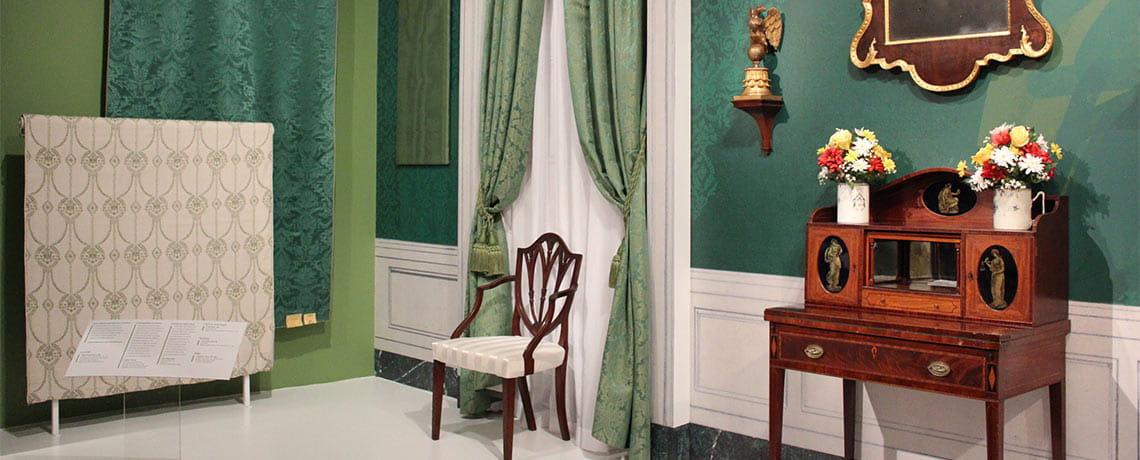
The exhibition uses antique furnishings, fabric swatches, wallpaper samples, original drawings and more to illustrate the Kennedy- and du Pont-led transformation of the Red, Green and Blue State Rooms in the White House; Photo by Theresa Medoff

A telegram inviting H.F. du Pont to the White House is among numerous personal pieces of correspondence between Jacqueline Kennedy and du Pont featured in the Winterthur exhibition; Photo courtesy of Winterthur Museum, Garden & Library

Historic photo of Jacqueline Kennedy arriving in Wilmington, Delaware, for her 1961 tour and luncheon at Winterthur Museum; she was greet by Henry Francis du Pont (center) and his driver; Photo courtesy of Winterthur Museum, Garden and Library
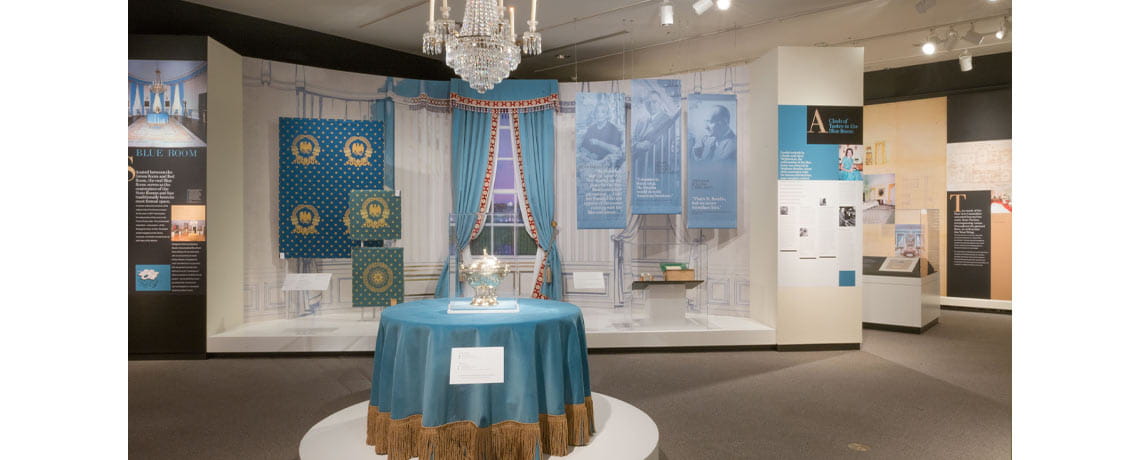
Exhibit showcasing the redecoration of the Blue State Room of the White House; Courtesy of Winterthur Museum, Garden & Library

Jacqueline Kennedy at Winterthur Museum in 1961; Courtesy of Winterthur Museum, Garden & Library

Reproduction of the wallpaper View of North America that was installed in the White House Diplomatic Reception Room during the Kennedy redecoration; the 19th-century wallpaper depicting idealized scenes of the US included the first images of people of color ever displayed in a White House State Room; Photo by Theresa Medoff
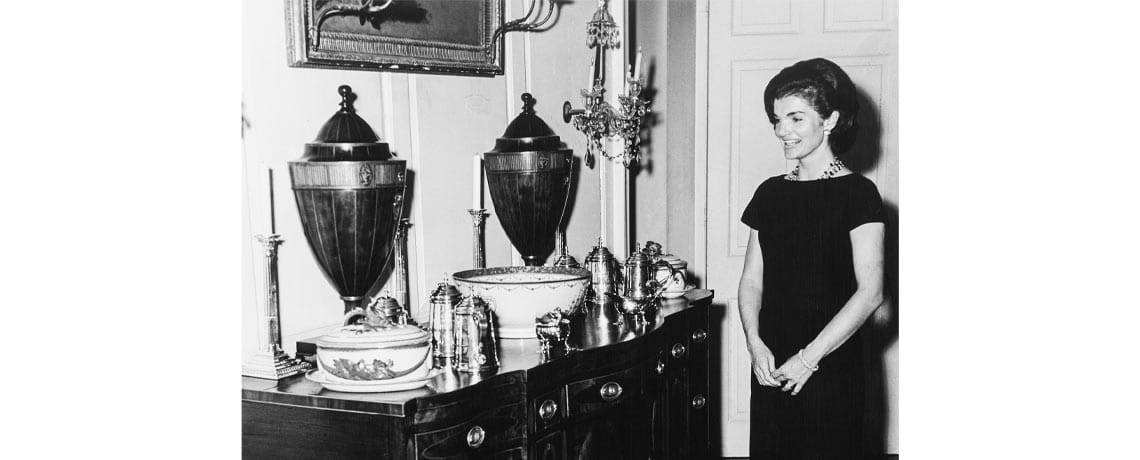
Henry Francis du Pont gave Jacqueline Kennedy a personalized tour of Winterthur Museum’s fourth and fifth floors when she visited in 1961; museum-goers today can take the guided tour Walking in Jackie’s Footsteps to see the same rooms that Kennedy had viewed: Photo courtesy of Winterthur Museum, Garden and Library
The exhibition opens with excerpts of Kennedy’s televised 1962 tour of the newly redesigned White House and introduces the First Lady and her goals for the project.
The following gallery details the transformation of the Red, Green and Blue State Rooms. A few choice furnishings, photos, fabric swatches and handwritten correspondence reveal the painstaking work—and sometimes the disagreements between designers and advisers—that went into the redecorating.
Also showcased are sketches and photos of the renovated family dining room and bedrooms, including those of toddler John F. Kennedy Jr. and his sister, Caroline. Poignantly, the Oval Office décor that President Kennedy himself had selected was being installed when he was assassinated in Dallas in 1963.
Complete your visit with a tour of Winterthur’s period rooms. Depending on the day, you’ll see either the fourth or fifth floor—the same two floors that the First Lady was shown on her visit in 1961—in the specially designed tour Walking in Jackie’s Footsteps.
LONGWOOD LIGHTS UP
As far as I’m concerned, you never need an excuse to visit Longwood Gardens in Kennett Square, Pennsylvania, one of the world’s legendary horticultural displays. In addition to lush gardens and magnificent fountains, the summer and early fall seasons bring the Illuminated Fountain Performances and live concerts in an outdoor theater.
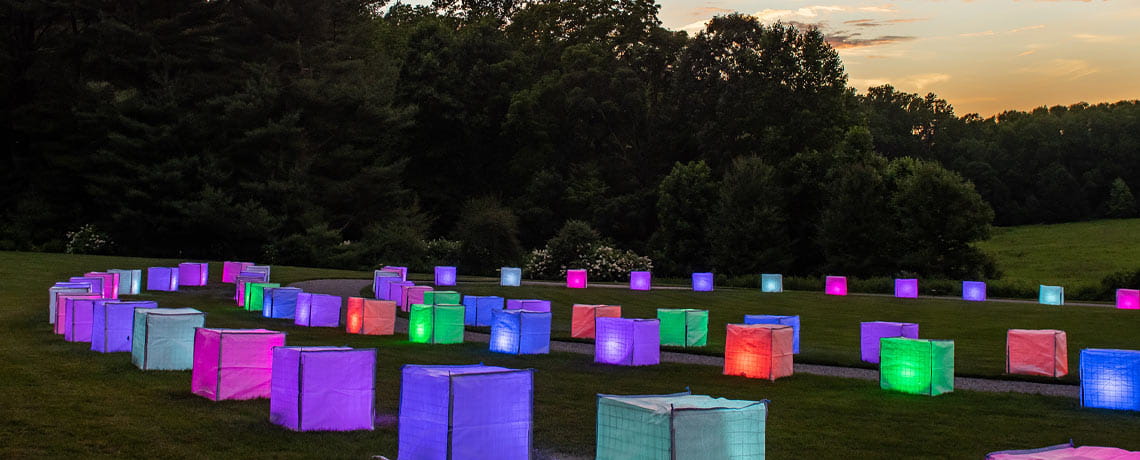
Longwood’s orchard is transformed with Munro’s SOS, which features 162 gabion baskets which pulse with light and sound; Photo by Hank Davis

Field of Light at Longwood Gardens surrounds you as you walk along the lake path, where reflections flicker in the water; © 2022 Bruce Munro, Photo by Serena Munro.
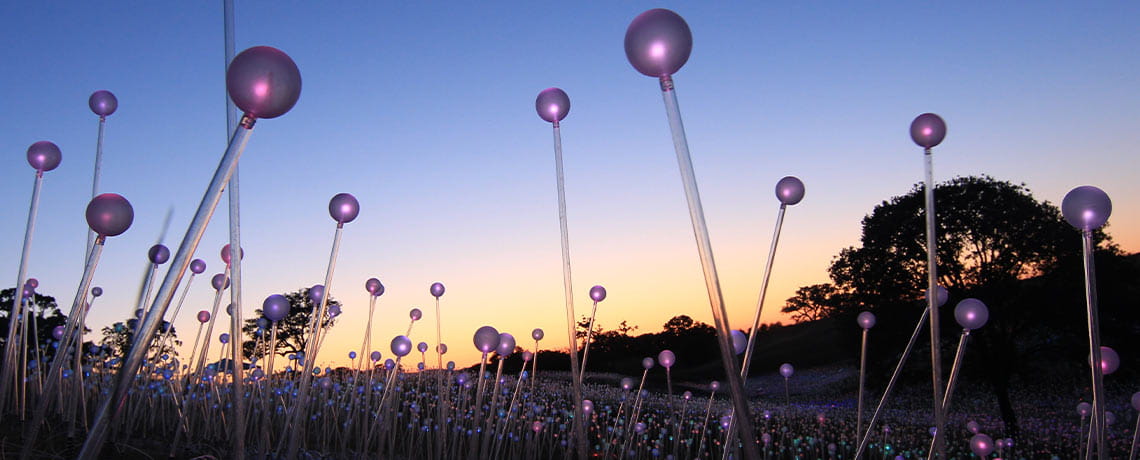
Bruce Munro’s Field of Light features 18,000 illuminated stemmed orbs lit by fiber optics along the Large Lake landscape. among the light installations displayed at Longwood Gardens this summer and fall. © 2019 Bruce Munro; Photo by Serena Munro

The Time and Again light installation is among the artworks by Bruce Munro at Longwood Gardens through October 30, 2022; © 2020 Bruce Munro; Photo by Christopher John
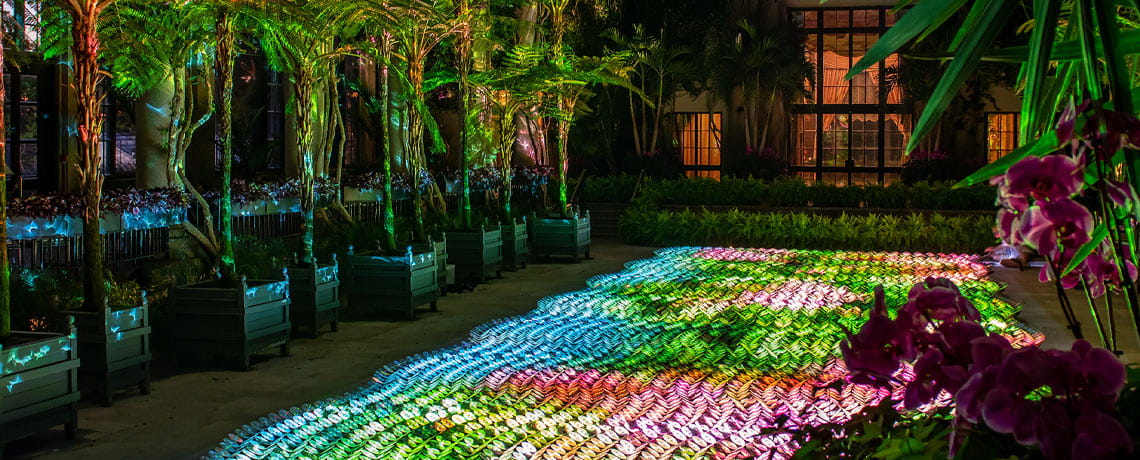
The Exhibition Hall in Longwood’s Conservatory is lit by a shimmering lake lake of 8,960 CDs with changing colors, images and sound in Munro’s artwork C-scales; Photo by Hank Davis

Longwood’s fountain gardens offer a refreshing respite in a serene atmosphere; Photo by Larry Albee/Courtesy of Longwood Gardens
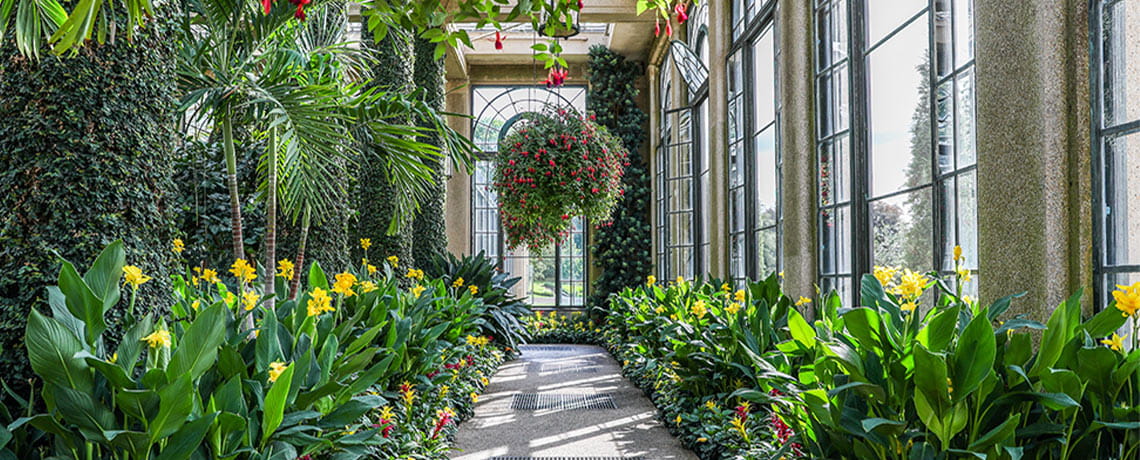
The Gardens are awash in brilliantly blooming annuals and perennials both indoors and out; Photo by Becca Mathias /Courtesy of Longwood Gardens
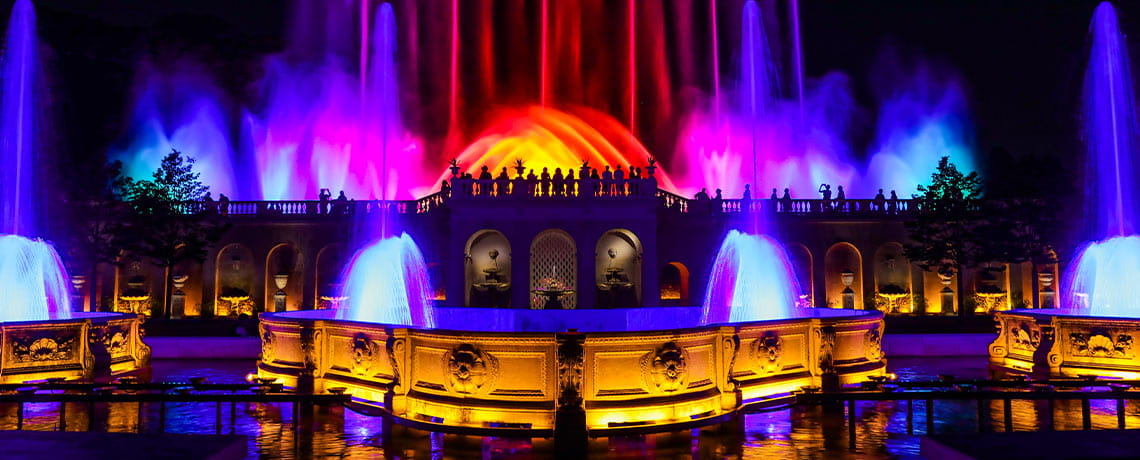
At night, Illuminated Performances offer a spectacle unlike any other; Photo by Becca Mathias/Courtesy of Longwood Gardens
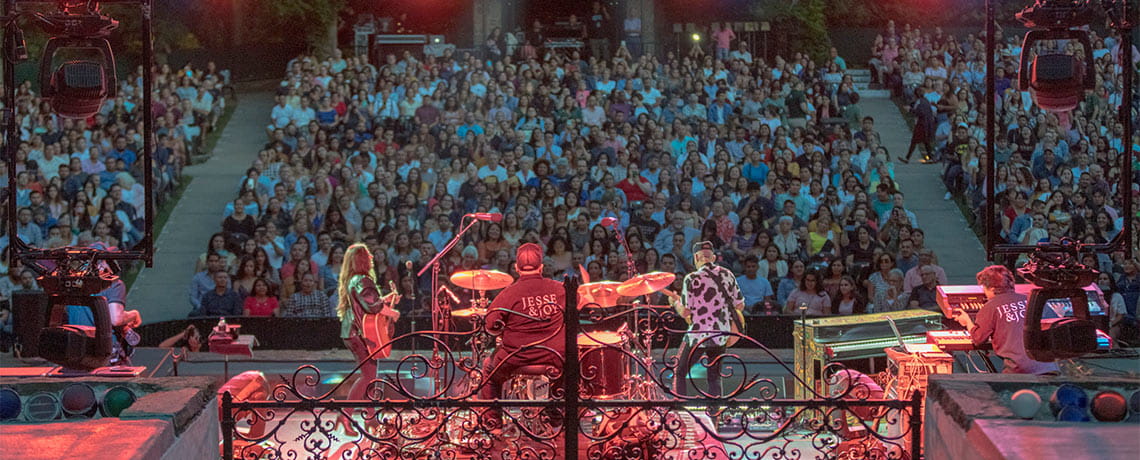
The summer concert lineup features Grammy Award-winning artists, cultural celebrations, and family fun performers in the splendor of the historic Open Air Theatre; Photo by Daniel Traub /Courtesy of Longwood Gardens

The beauty of summer unfolds throughout the season with lush, colorful gardens; Photo by Daniel Traub/Courtesy of Longwood Gardens
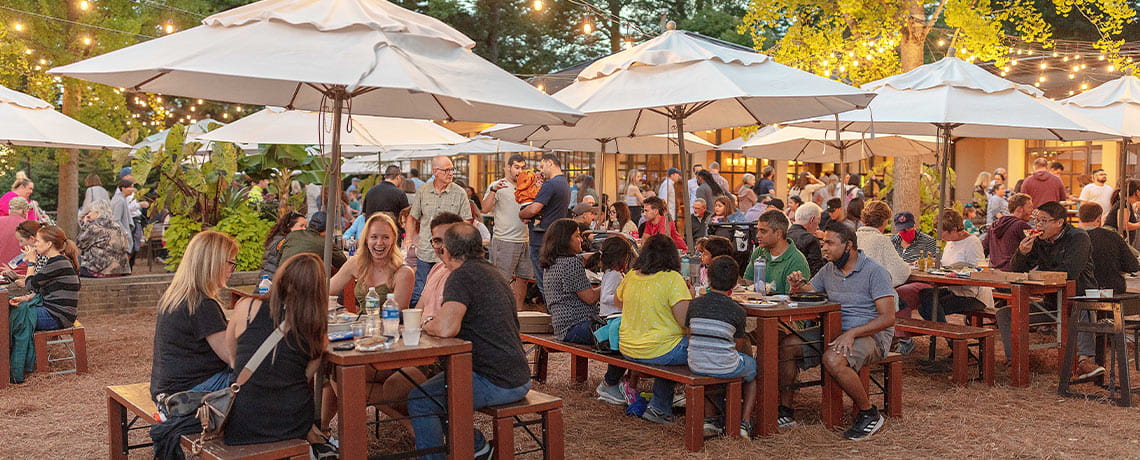
Longwood’s popular open–air Beer Garden offers light fare and Longwood Signature Brews; regional artists performing live Thursday to Sunday evenings; Photo by Daniel Traub/Courtesy of Longwood Gardens
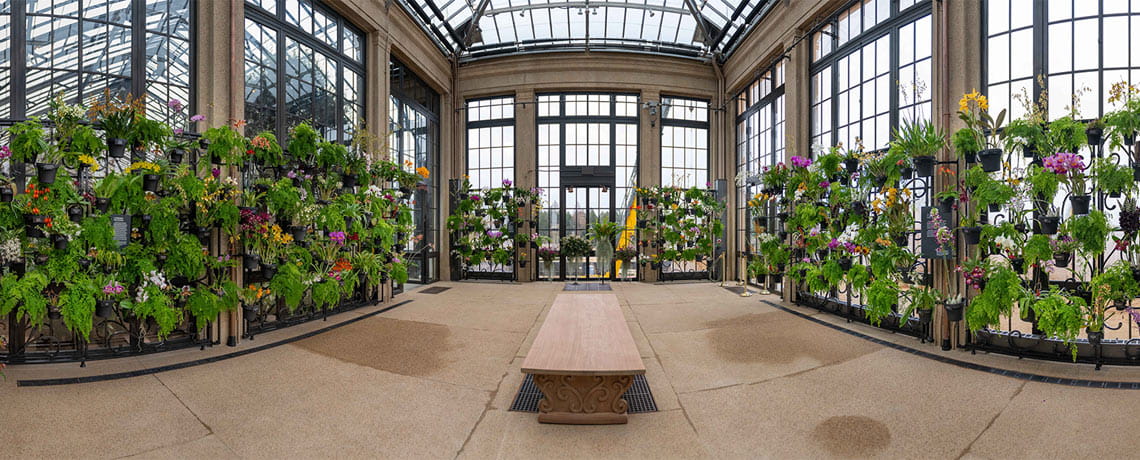
Wide shot of Longwood Garden’s restored Orchid House, which is now able to exhibit 50 percent more orchids from Longwood’s collection; Photo by Harold Hank/Courtesy of Longwood Gardens
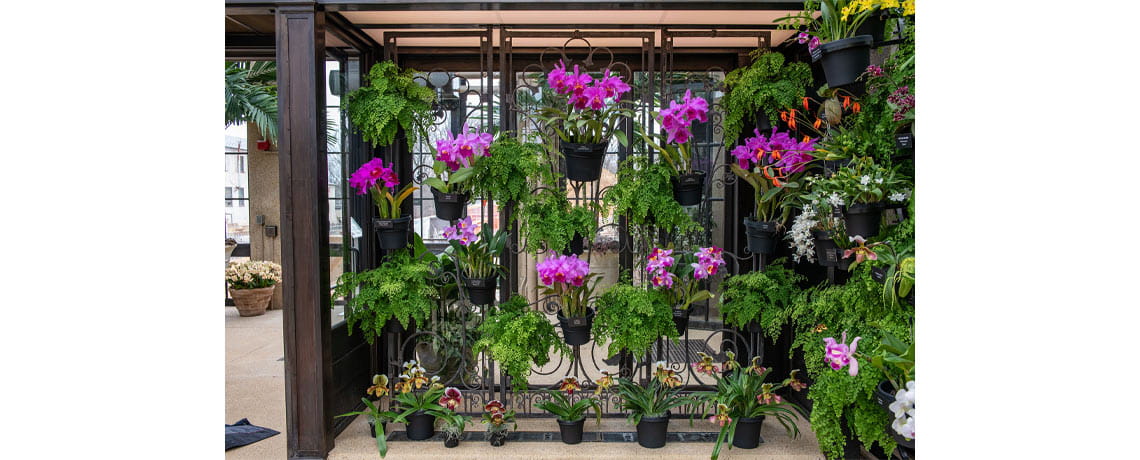
One of the restored antique bronze display cases in the Orchid House featuring cattleya orchids, which make up 40 percent of Longwood’s orchid collection; Photo by Harold Hank/Courtesy of Longwood Gardens
This year, an exhibition by artist Bruce Munro infuses even more evening drama into the setting. Light: Installations by Bruce Munro (on display through October 30) scatters eight immersive large-scale works around the gardens to emphasize the healing possibilities of nature and art.
“When I was installing my last exhibition at Longwood 10 years ago, I observed a new lightness in visitors’ faces after they had spent time in the gardens,” Munro explains. “They had sort of shed the stresses of life, and that’s what a garden does. I feel the same about art. It can draw people away from their anxieties and stresses. It can strengthen and rebalance them.”
The whimsical Ramandu’s Table, for example, features 1,000 plastic flamingos wading in a waterfall-filled pond. Loosely inspired by a story in C.S. Lewis’ The Voyage of the Dawn Treader, Munro’s work illuminates the flamingos with lights that pulse slowly through the colors of dawn and dusk. Munro hopes the accompanying soundtrack of honking flamingos will elicit laughs.
ALL-NEW DELAWARE MUSEUM OF NATURE & SCIENCE
Late May saw the unveiling of a 17-month, $10.8 million overhaul of what was formerly known as the Delaware Museum of Natural History—located almost directly across a country road from Winterthur. The renovation took the interior down to its studs and rethought the mission of the museum so that it now addresses issues challenging our world today, particularly climate change.
“The take is no longer just: Here’s what we know. It’s, here’s why it matters. Here’s what you can do,” says Director of Communications Jennifer Acord.

The entrance to the Delaware Museum of Nature & Science aglow in the evening; Photo by Teresa Bonaddio
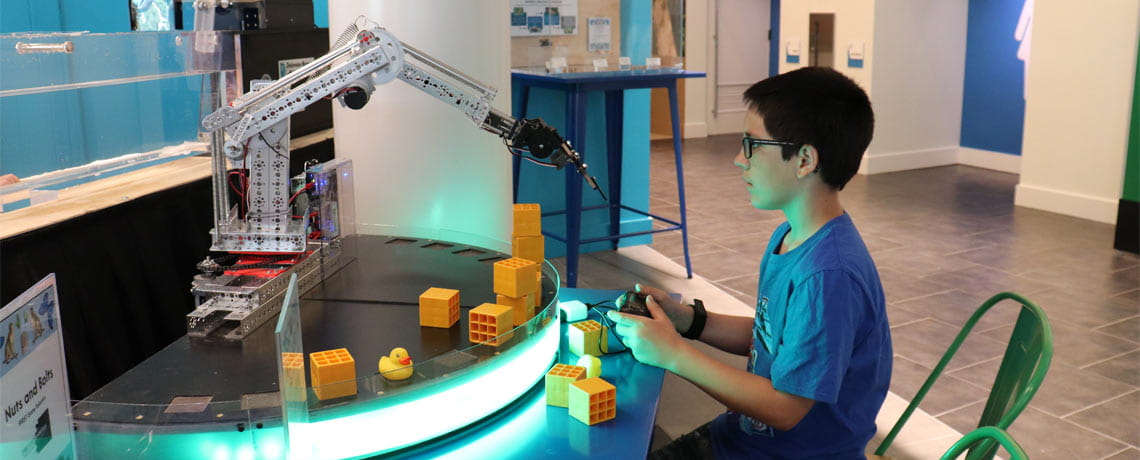
The Discovery Gallery includes rotating hands-on science activities from community partners; Photo courtesy of Delaware Museum of Nature & Science
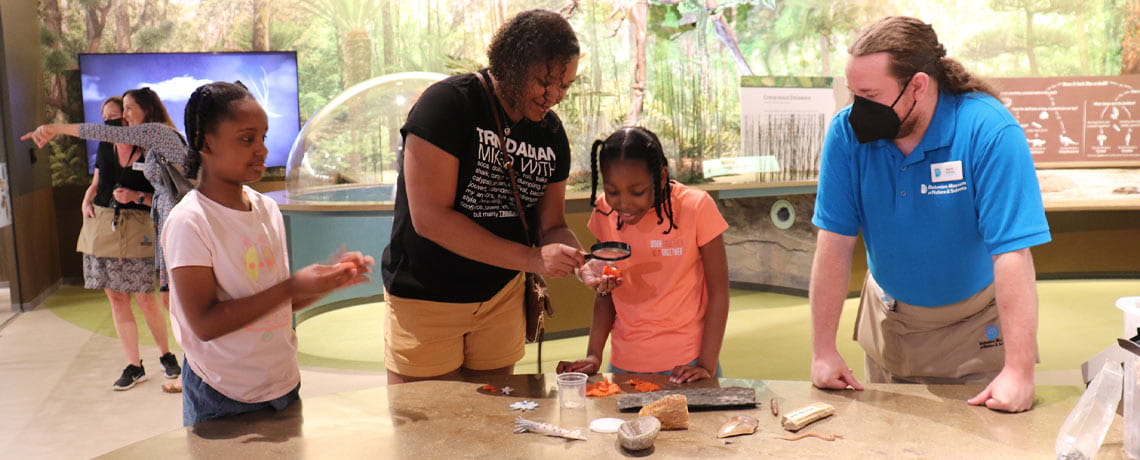
Interpretive staff bring specimens and activities to the galleries to supplement the exhibits at the Delaware Museum of Nature & Science. Here in the PaleoZone, Interpretive Lead Nathan Gilson (right) shares fossils with visitors; Photo courtesy of Delaware Museum of Nature & Science

The Coral Reef exhibit in the museum’s Global Journeys gallery features a glass-covered walk-above scene representing the Great Barrier Reef; Photo by Teresa Bonaddio
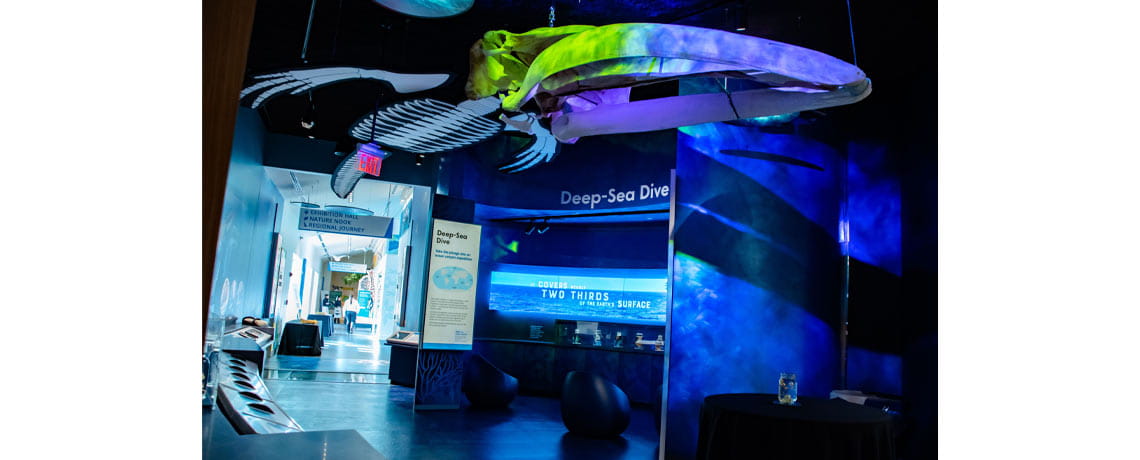
The Oceans exhibit in the Global Journeys gallery features the skull of a juvenile humpback whale, collected by museum staff from Pickering Beach, Delaware, in September 2018; Photo by Teresa Bonaddio
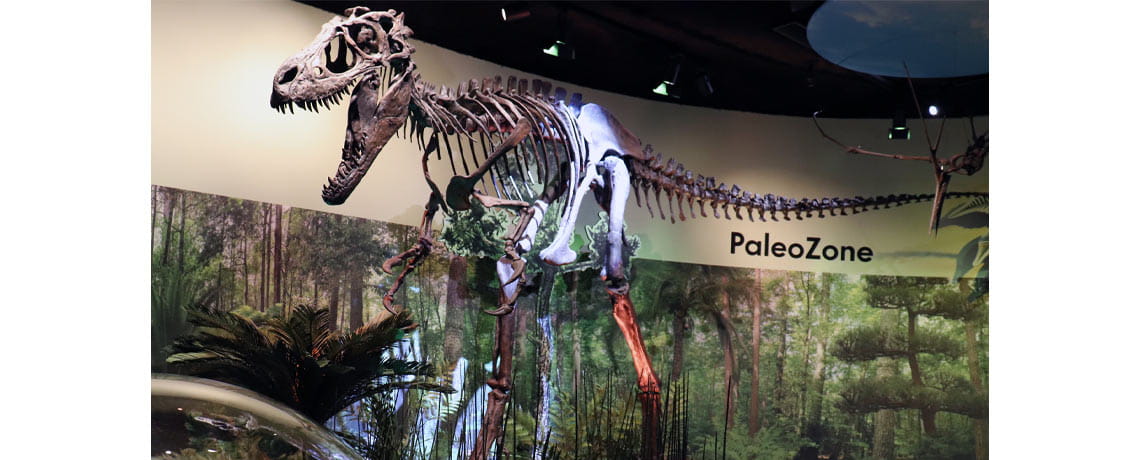
A model of a Dryptosaurus skeleton is the centerpiece of the museum’s PaleoZone gallery; Photo courtesy of Delaware Museum of Nature & Science
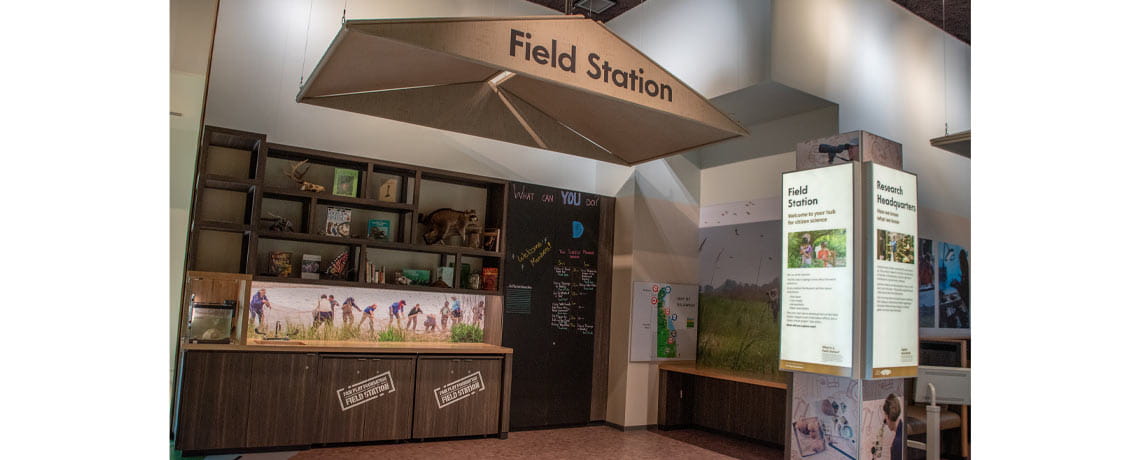
The Field Station in the Regional Journey Gallery encourages visitors to delve into citizen science projects; photo by Teresa Bonaddio
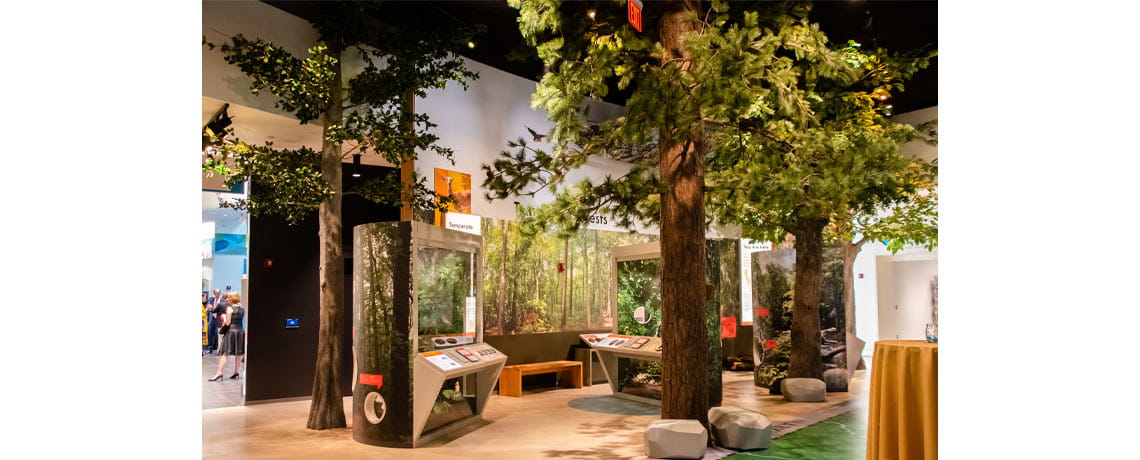
The Regional Journey gallery at the Delaware Museum of Nature & Science focuses on various ecosystems in the state of Delaware, like the temperate forest exhibit shown here; Photo by Teresa Bonaddio
This new version of the museum removes the glass barriers and replaces them with immersive walk-through environments. The Regional Journey gallery depicting Delaware, for example, transports visitors to a temperate forest, a bald cypress swamp, a salt marsh, dunes and the Delaware Bay.
Look up into the model trees to see a variety of taxidermy birds, and peer into the aquariums to observe live animals, a subtle reinforcement that all creatures depend on our stewardship of the environment. Flipbooks and e-readers allow visitors to delve more deeply into ecosystems and species, while videos show humans and animals enjoying nature in Delaware.
HAGLEY MUSEUM: PATENTS AND PROGRESS
When all its contraptions are closed up, the “improved nursery lounge,” also described as an “invalid bedstead,” doesn’t look too different from an ordinary Victorian-era sofa. But, oh, the bells and whistles! Start opening drawers and compartments to find a bureau, a writing desk with shelves, a folding table, a mirror and even a chamber pot (or bedpan) with a wooden seat. Use it as an easy chair or a bed.
“It’s like the Swiss army knife of furniture,” says Chris Cascio, assistant curator of patent models at Hagley Museum and Library in Wilmington.
It’s one of the wackiest items I’ve ever seen at Hagley, and it’s part of Nation of Inventors, a new permanent exhibition set to debut later this summer.
The 120 patent models on view belong to Hagley’s collection of 5,000 pieces dating from the 1790s to the 1880s, when inventors no longer needed to submit a working scale model to the US Patent Office. While typically 12 inches square, some of the models are life-size, such as the numerous artificial limbs exhibited (much in demand following the Civil War).
The inventors include the well-known, such as Thomas Edison, who was awarded some 1,000 patents; John and Joseph Beam, of Jim Beam fame, who patented a method for distilling liquor; Madam C.J. Walker, creator of beauty products (recently profiled in the movie Self Made); and John Landis Mason, who devised a method for sealing jars to preserve food.

Eleutherian Mills Residence at Hagley Museum and Library; Photo by Becca Mathias

Hagley Museum’s new permanent exhibition, Nation of Inventors, explores the diversity of inventors; Photo by Kerry Harrison
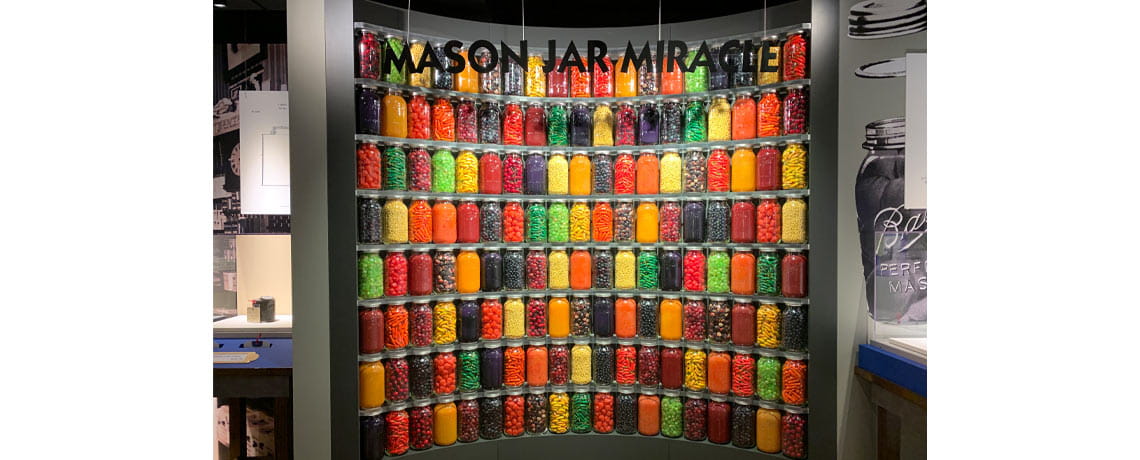
In 1858, John Landis Mason patented a new method for sealing jars to preserve food. The invention—Mason jars—is still in use today; Photo courtesy of Hagley Museum and Library

Among the 120 patent models displayed in Nation of Inventors is William Merrit’s model for an invention to improve feathering paddle wheels; Photo courtesy of Hagley Museum and Library

The Birkenhead waterwheel represents an early form of harnessing water power for use by the DuPont Company; Photo courtesy of Hagley Museum and Library
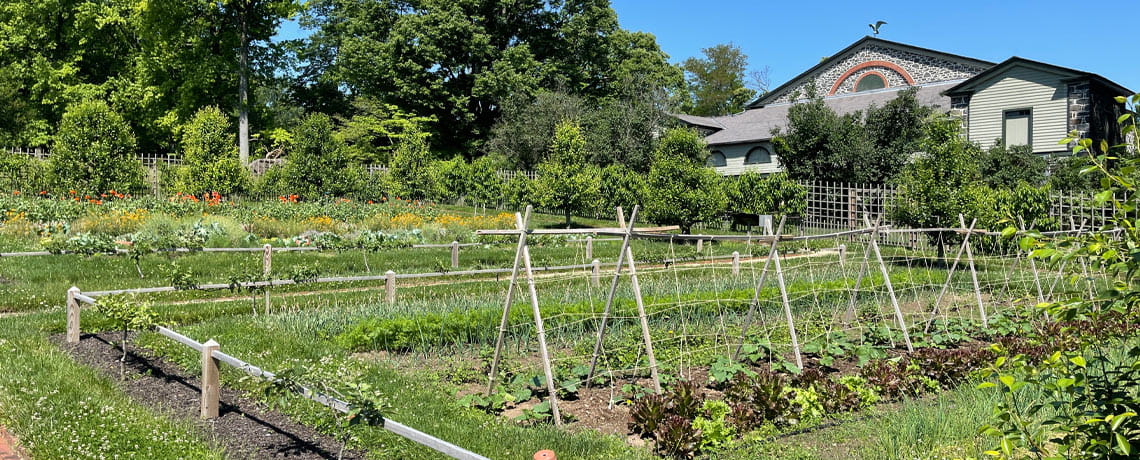
E. I. du Pont Garden at Hagley Museum and Library; Photo courtesy of Hagley Museum and Library
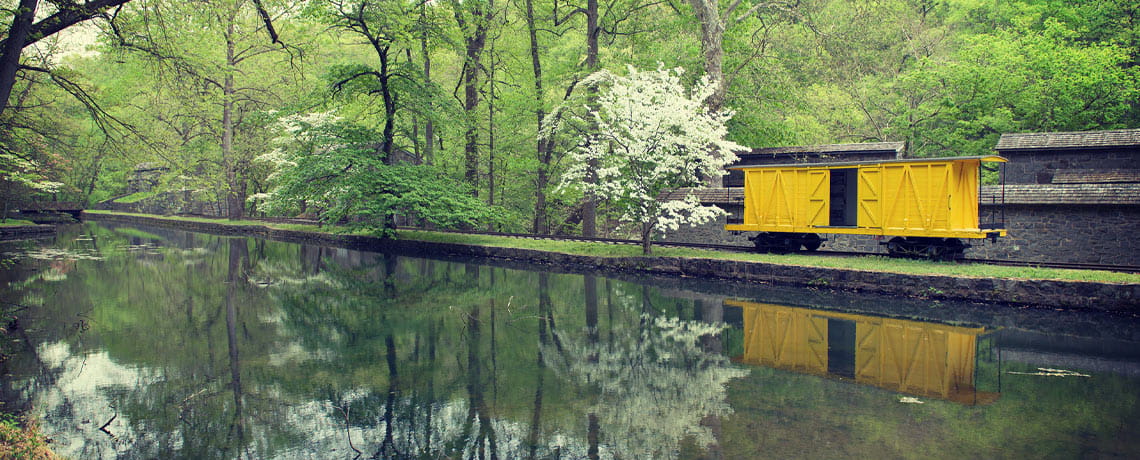
A millrace and boxcar in the Hagley Museum’s Powder Yard; Photo by John Vari

Gibbons House on Workers’ Hill at Hagley Museum and Library; Photo by Fantail Photography
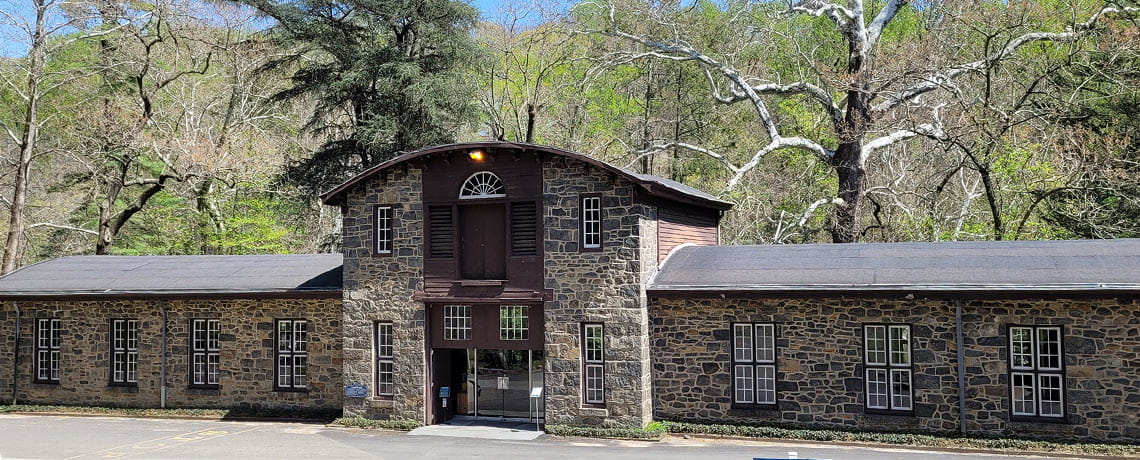
The Millwright Shop of the early DuPont Company can still be toured at Hagley; Photo courtesy of Hagley Museum and Library
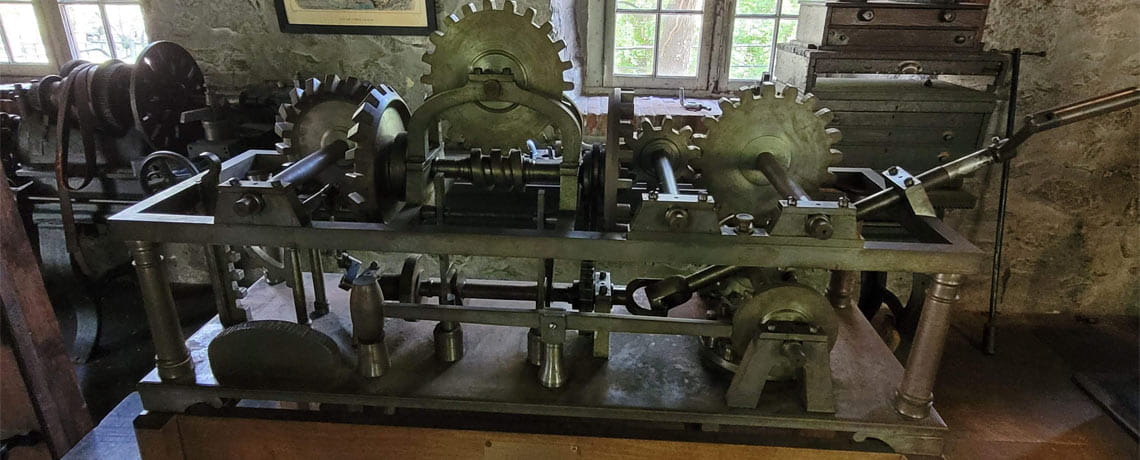
Gears from original DuPont company machinery are displayed at Hagley Museum’s machine shop; Photo courtesy of Hagley Museum and Library

Patent models on display at Hagley Museum’s Nation of Inventors exhibition; Photo by Kerry Harrison
Other names are less familiar. Did you know that Melitta Bentz invented paper coffee filters in 1908 because she was tired of having grounds in her coffee? Or that Louis H. Latimer—the son of parents who escaped enslavement—improved on Edison’s light bulb by using a carbon filament instead of paper?
After trying your own hand at problem-solving and inventing, tour this former du Pont home and its gardens, along with the restored worker’s community and the historic gunpowder mills along the Brandywine River.
And now you know why I always find Greater Wilmington exciting. There’s always something new to see and do in my hometown.




















































